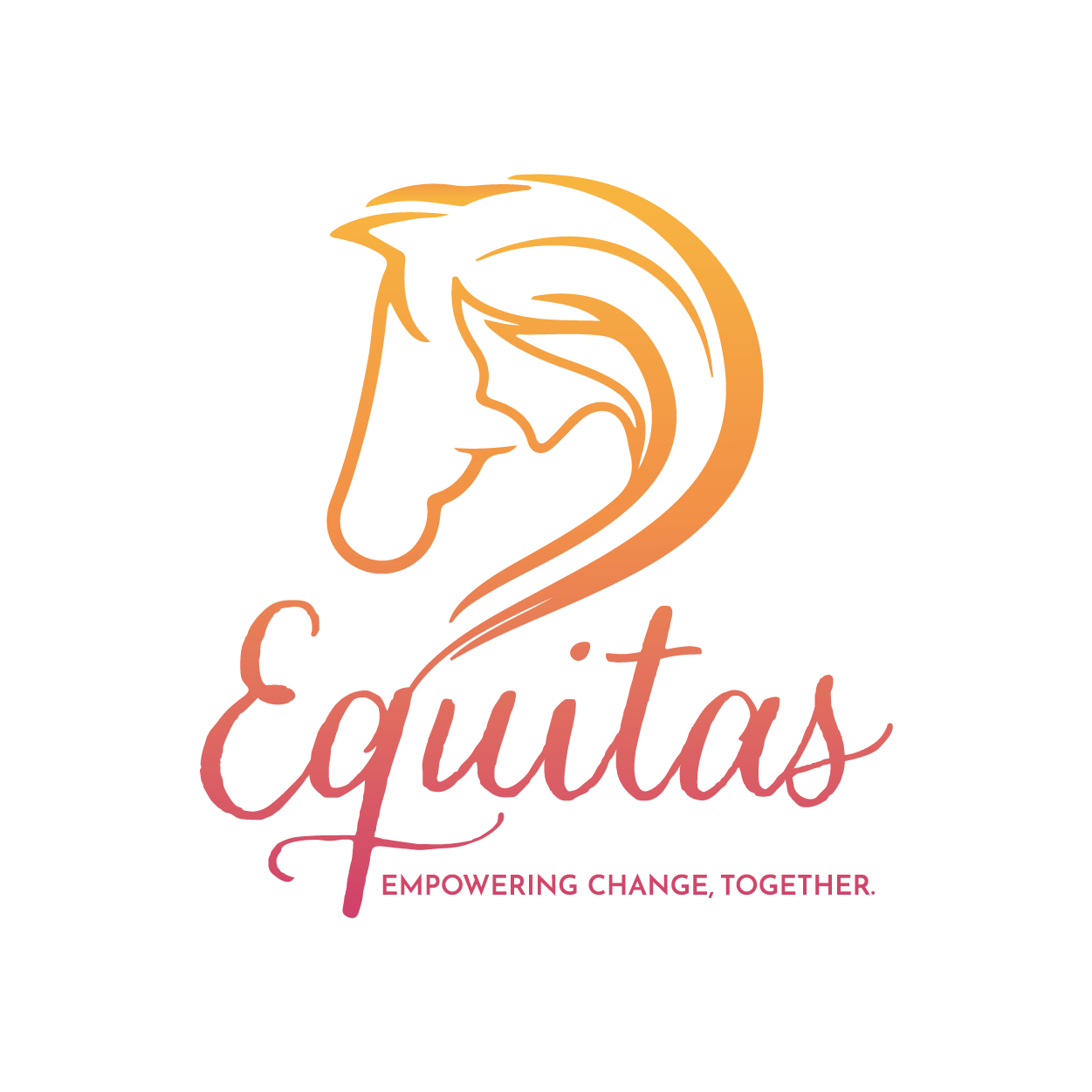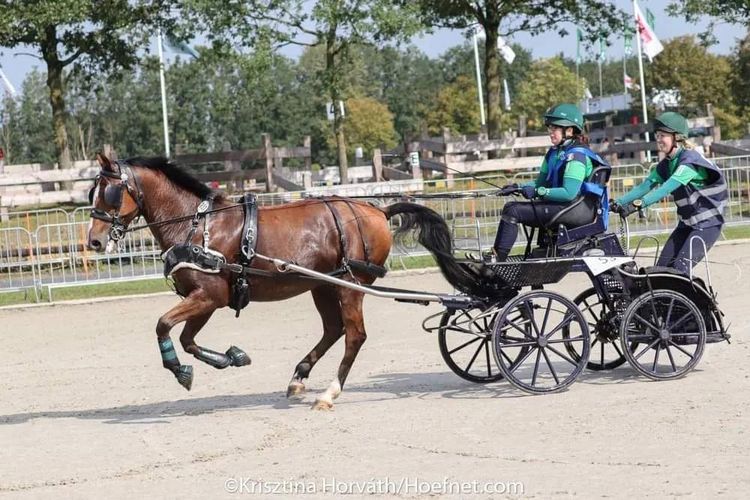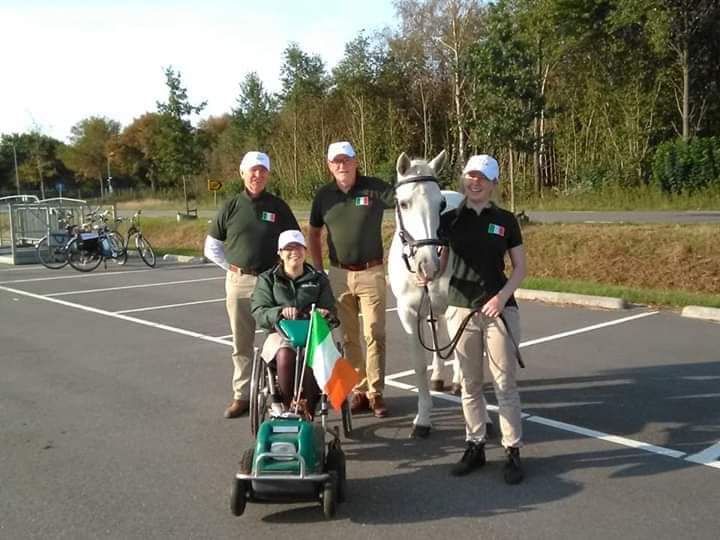Road Safety: A Carriage Driver's Perspective

Road safety for equestrians and their horses has been highlighted by Equitas over the past few weeks. I offered to write this piece as this is often phrased in terms of “horses and riders” which excludes other equestrians including, but not limited to, carriage drivers (those who long rein or lead horses on the roads are others). While this may appear to be purely semantics, language creates awareness or a lack of same and excluding other equestrians and their horses from awareness measures is a lost opportunity to hopefully increase safety for all of us.
"Language creates awareness or a lack of same"
3 Incidents in 30 minutes
I started my pony Mossy into his pre-season driven work a couple of weeks ago and on our very first drive which lasted just 30 minutes, the following incidents occurred:
1. A car passing giving good space but driving too quickly and through large puddles. The speed and noise caused him to spook towards the middle of the road – as he is blinkered and is missing his right eye, his understandable reaction is to try to turn towards the source of what has frightened him.
2. The car following this one continued to pass despite him spooking. As this one didn't start off by passing wide enough (they were well within the 2m recommended space before he spooked), their front wheel missed his leg by 12 inches. At the angle they approached if they had hit him it would have caused a catastrophic injury.
3. A third car squeezed past on a narrow lane despite us signalling for them to wait (there was a driveway for me to let them pass just 25m further along). It was so close my groom was able to easily touch the car.
Awareness, Responsibility, and the Law
The first two I believe were down to ignorance. Simply telling people who have no horse knowledge to "pass wide and slow" is not enough. They need to be told to be aware that things they cannot see or hear can cause horses to spook and if they are in a chain of cars passing, if an earlier car causes the horse to become visibly stressed, they should fall back even if there seems to be space, and especially if indicated to do so by the person in charge of the horse.
The third example above was purely malicious, however. It needs to be highlighted to other road users that the rules of the state that if someone in charge of animals gives a signal to slow down or stop it must (not should, must) be obeyed.
The Rules of the Road highlights the care needed when overtaking driven horses, equating them with loose horses. Most driven horses like Mossy wear blinkers, to prevent them from getting spooked by the carriage following them.
This means that their vision is much more limited than ridden horses and for every vehicle other than those approaching head-on, they can only hear it but not see it.
An additional consideration is that drivers communicate with their horses primarily by means of reins and voice; the whip is used in place of the leg but it is used by touching, not hitting the horse. There is a further danger that can be caused by a spooking horse jack-knifing and overturning the carriage.
There’s an additional and somewhat uncomfortable point to make regarding the attitude of vehicle drivers to carriage drivers on the road. I feel that there is sometimes an element of anti-Traveller bias involved, that people see a horse and carriage on the road and decide that we are due less care due to this perception.
I firmly believe that no person or horse should be put at risk on the roads by vehicle drivers no matter who they are or who happens to be driving them.
As a member of both HSI’s Carriage Driving Section and British Carriage Driving, my carriage is fully road-legal in terms of rear reflectors and I hold substantial third-party public liability insurance. My pony Mossy is well-trained and extremely responsive to my aids and I always carry a groom who can get down off the carriage to deal with issues if needed. Despite all this, if I had the choice I’d not drive on the roads at all however it’s necessary due to the limited places to drive for fittening (no farmers want a carriage on their land!) and the need to keep Mossy okay with traffic for when our Section A (roads and tracks) are on roads.
Personally, after the events of the other week, I have bought a camera for my carriage and will be submitting footage to the Guards in every instance where other road users don’t abide by the rules of the road in either the way they pass us or where they don’t obey my or my groom’s signals to slow down or stop. I suggest as many equestrians as possible do the same.
Take Action: Have Your Voice Heard
The upcoming meeting between Local Authority Road Safety Officers in Ireland and the RSA on February 18th presents a crucial opportunity to ensure road safety for Equestrians is a priority. If you’re an equestrian, driver, or simply someone who believes in safer roads for all, now is the time to speak up. Contact your local Road Safety Officer and express your concerns. Every voice matters, and together, we can create real change. Let’s make sure equestrians are heard and that action is taken to protect both horses and riders on our roads.




